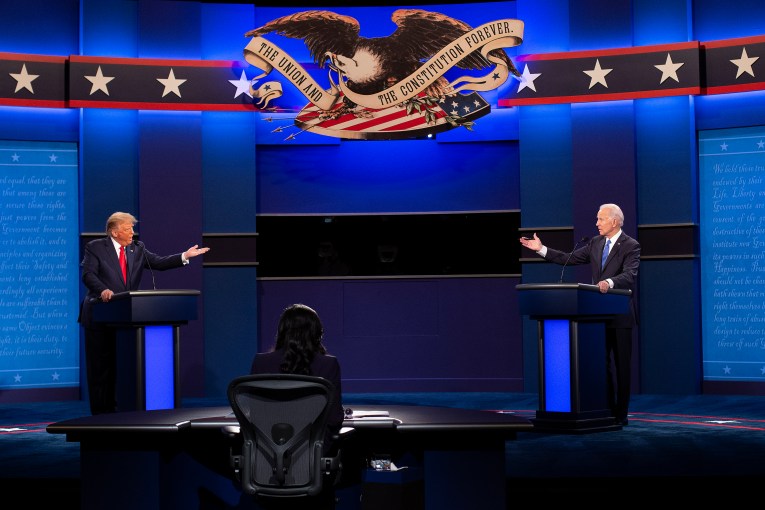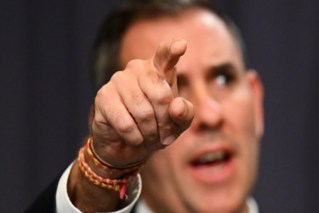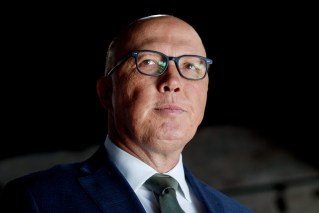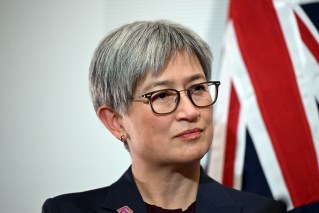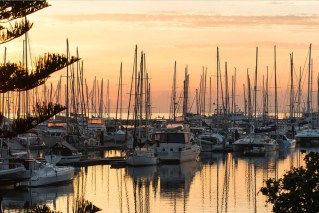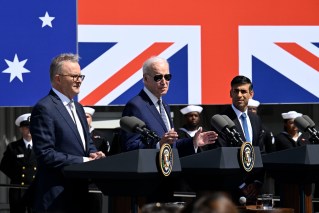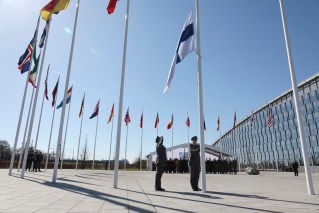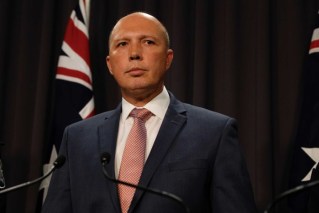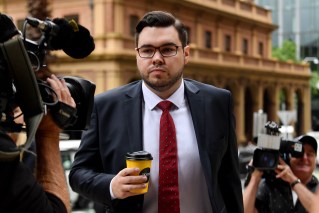Can our leaders ever see eye to eye on border restrictions?
A bruising showdown is looming during the meeting of federal, state and territory leaders, as Prime Minister Scott Morrison continues to push for the states to fully open their borders.
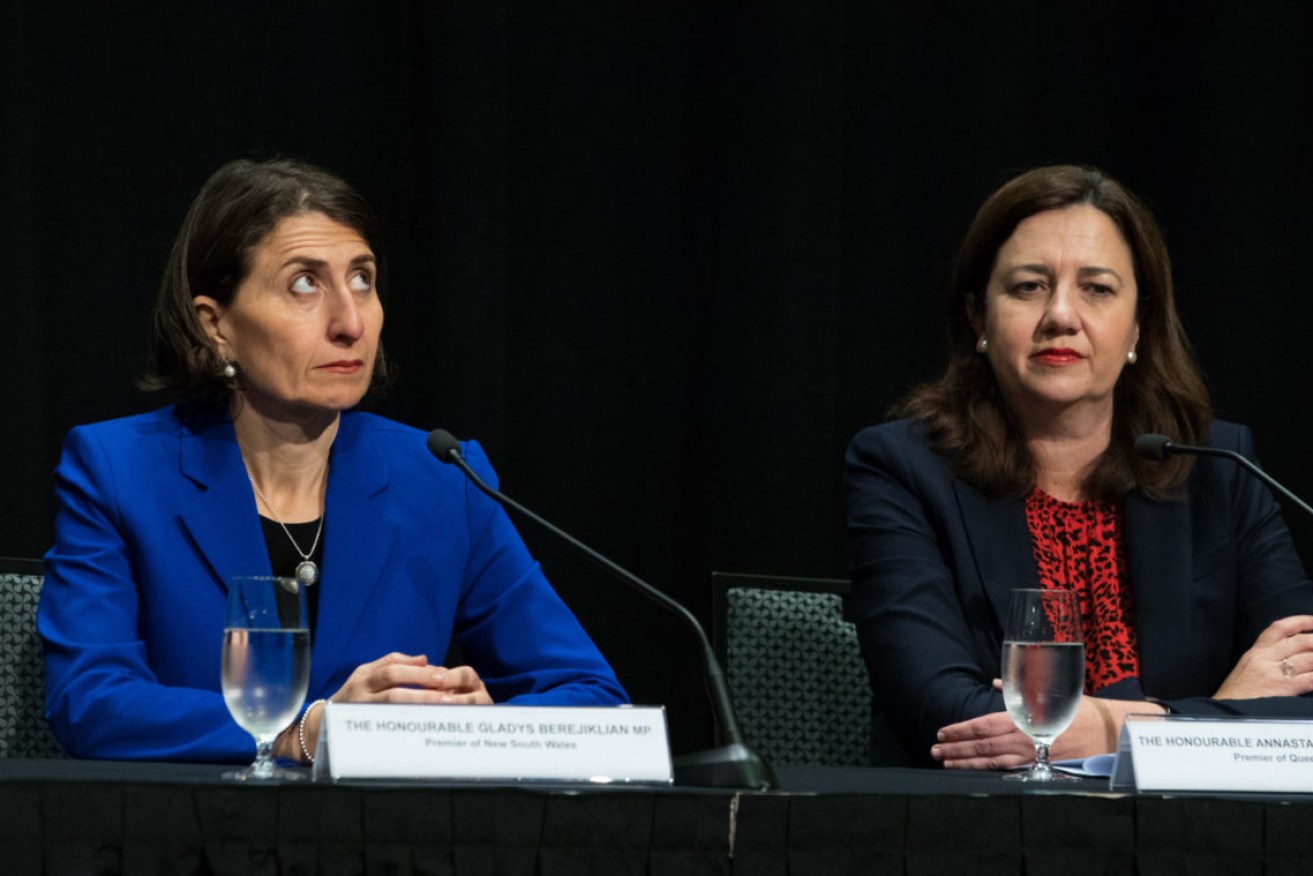
NSW Premier Gladys Berejiklian (left) and Queensland Premier Annastacia Palaszczuk. (Photo: AAP Image/Marc McCormack)
National cabinet – chaired by Prime Minister Scott Morrison with premiers and chief ministers – is set to meet virtually for its latest pandemic decision-making session.
There will be further discussion on a definition for hotspots, which Morrison wants clarity on so there’s an understanding on when states can close their borders.
Tourism Minister Simon Birmingham wants states to rethink their current approach, saying border closures could cost tourism operators $55 billion this year.
NSW Premier Gladys Berejiklian described Queensland’s benchmark of 28 days of no community transmission in NSW before removing its border controls as “a pretty tall order”.
“We’ve demonstrated for two months nearly that you can actually maintain a good control of the virus and keep your economy going,” she said.
“I hope other states have the confidence to take their borders down and do the same.”
Before the meeting, Queensland Premier Annastacia Palaszczuk gave some indication of the pressure she was under, her voice wavering as she expressed appreciation for the letters, emails, cards and comments of support for the state’s border stance.
Palaszczuk said she felt Queensland was being unfairly targeted, both in relation to its border restrictions and, more recently, for securing the rights to host the AFL grand final, which she said would be subject to the same controls wherever it was held.
She said she would continue to act on health advice and ignore the criticism.
“It is relentless, it is intimidating, but I will not be intimidated,” Palaszczuk said.
Palaszczcuk said Queensland’s border restrictions continued to be refined: the NSW border town of Moree would be added to the ‘border bubble,’ to help boarding students and local trade, while a new unit would start considering applications for exemptions.
But Palaszczuk acknowledged that Queensland’s border restrictions, and similar measures in place interstate and overseas, might see families still separated at Christmas.
“We did not cause this pandemic, this is a world pandemic,” Palaszczuk said.
“No one asked for this.”
Queensland recorded no new cases overnight – the first ‘zero day’ since recent clusters in the south-east – and the number of active cases has fallen to 25.
Chief Health Officer Jeannette Young said while she was heartened by the Queensland numbers, the number of new infections in NSW and Victoria were still cause for concern.
“There are still too many cases, I believe, for us to be able to safely open the border,” Young said.
Young noted that three people returning from an ill-dated Melbourne party trip had led to 35 being infected in Queensland, and that demonstrated the risks associated with such travel.
Palaszczuk did not expect any decisions out of today’s meeting and said she would remain firm.
West Australian Premier Mark McGowan, who is riding high in the polls ahead of the WA election next March on the back of his hard border policy, has poured cold water on the idea of a national consensus position on hotspots.
“Hotspots are nowhere near as good as borders for protecting our state,” he told reporters on Thursday.
“If you have a hotspot, you basically have a set of postcodes in another interstate city from which people can’t come, and then you rely upon no one else in Melbourne or Sydney having gone through that hotspot.
“You rely upon the honesty or truthfulness of people in terms of where they claim they live.
“It’s a very difficult system to administer and it’s very unreliable.”
Victoria will on Sunday unveil its roadmap out of its current strict restrictions, which Premier Dan Andrews says is based on state health advice.
States have also been urged to back a national agricultural code to ensure Australia’s food production isn’t hurt by border closures.
The code’s chances of being agreed to are in serious doubt after the expert medical panel of state and federal health officers rejected it earlier in the week.
National cabinet will also receive an economic update, after Australia’s first recession in 30 years was confirmed this week.
The economy has shrunk two quarters in a row, amounting to a technical recession.
The June quarter contraction of seven per cent is the worst figure since records began.
National cabinet will get the latest figures on international arrivals as well as the limit on Australians able to return home each week.
The figure is not expected to change, with states saying the limits ensure their mandatory hotel quarantine systems are sustainable.
There are now more than 23,000 Australians abroad who want to return, a third of whom are in India.
Australia’s death toll rose to 678 on Thursday after 15 more deaths in Victoria.
There were also 113 new cases in Victoria, the first time since Sunday that the state’s daily tally has been above 100.
National cabinet will also be briefed by the Bureau of Meteorology on the forthcoming high risk weather season, namely bushfires and cyclones.
NSW confirmed 12 new cases on Thursday as clusters associated with a Sydney CBD gym and two schools in the city’s west rose to 52 and 12 respectively. Three cases – a person in Parkes and two in southwest Sydney – have no known source.
Berejiklian says she spoke to Queensland counterpart Annastacia Palaszczuk on Wednesday over the northern state’s strict border measures. The two leaders are at loggerheads over the border closure imposed by Queensland, which forces those coming from NSW without a valid exemption into 14 days of hotel quarantine at their own expense.
The restrictions came under fire last week after a Ballina woman pregnant with twins lost one of the babies after being forced to fly to Sydney for the birth.
The mother was told by northern NSW health officials she would have to go into quarantine under Queensland rules.
Berejiklian said her conversation with Palaszczuk was “polite and constructive” but she received no indication Queensland would ease its restrictions.
Palaszczuk this week said border rules wouldn’t change for at least another month.
Queensland Chief Health Officer Dr Jeannette Young said on Thursday that NSW needed to pass 28 days without any COVID-19 community transmission before the border rules would be reassessed.
“The guideline that’s been set by the Queensland Government in relation to when they reopen their border is a pretty tall order,” Berejiklian said.
“I don’t know anywhere on the planet where a society could function productively during a pandemic and get an assurance you’re going to (get) zero cases of community transmission.
“If you have confidence in your health system, confidence contact tracing is something you can do within your state, there shouldn’t be a reason for you to keep your border closed given the low rates of community transmission currently in NSW.”
Berejiklian said the two premiers also spoke about the difficulty Queensland-based doctors were experiencing crossing the border for work in northern NSW hospitals.
She said similar problems had been easily resolved on the closed NSW-Victoria border, for which the buffer zone will on Friday expand from 2.5km to 50km.
Health Minister Brad Hazzard said some northern NSW border facilities, including Tenterfield Hospital, were now devoid of doctors.
Berejiklian said Palaszczuk agreed her government would look into the issue.
-AAP
-With Sean Parnell
